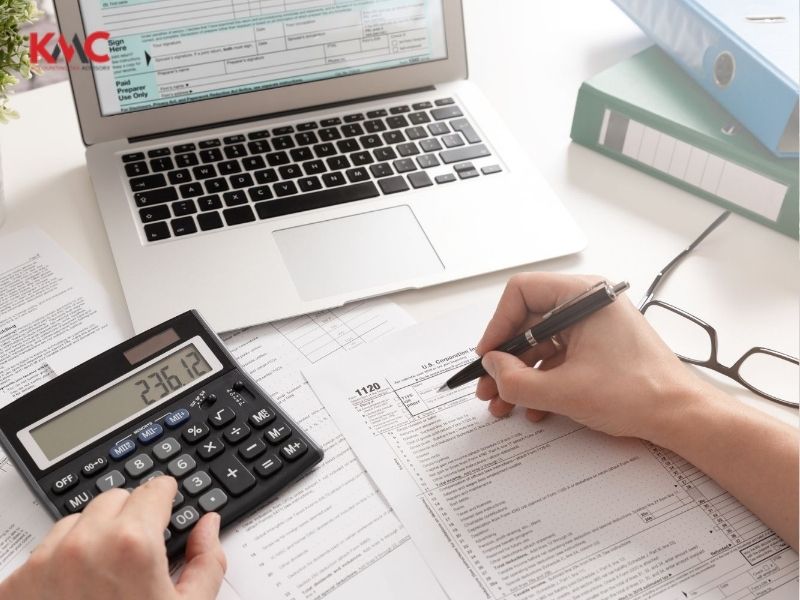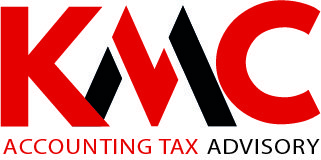Finance leasing is currently a widespread trend in business operations. A question of great concern to many enterprises is how to account for finance leases in a systematic and accurate manner to optimize cash flow, ensure financial transparency, enhance competitiveness, and promote sustainable growth. In the following article, experts from KMC will provide you with detailed explanations and standard-compliant procedures for accounting for finance leases.
Understanding Finance Leases
What is a finance lease?
Pursuant to Article 36, Circular No. 200/2014/TT-BTC:
“b) Finance lease: A lease of property whereby the lessor transfers substantially all the risks and rewards incidental to ownership of the asset to the lessee. Ownership of the asset may or may not eventually be transferred.”
According to Accounting Standard No. 06, typical situations that result in a finance lease contract include:
- The lessor transfers ownership of the asset to the lessee at the end of the lease term;
- At the commencement of the lease, the lessee has the option to purchase the leased asset at a price expected to be sufficiently lower than its fair value at the end of the lease term;
- The lease term covers the majority of the asset’s useful economic life, even if ownership is not transferred;
- At lease commencement, the present value of the minimum lease payments amounts to substantially all (or equivalent to) the fair value of the leased asset;
- The leased asset is of a specialized nature such that only the lessee can use it without major modifications.
A lease contract is considered a finance lease if it meets at least one of the following criteria:
- If the lessee cancels the lease and must compensate the lessor for losses related to the cancellation;
- Income or losses from changes in the fair value of the leased asset’s residual value are attributable to the lessee;
- The lessee can continue leasing the asset at a rent substantially lower than the market rent after the original lease term ends.

Distinguishing Finance Lease and Operating Lease
It is important to distinguish between a finance lease and an operating lease. Both involve leasing fixed assets, but they are accounted for and monitored differently.
- Duration: Finance leases are long-term; operating leases are short-term.
- Transfer of risks and rewards: In finance leases, most risks and rewards incidental to ownership are transferred; in operating leases, no such transfer occurs.
According to Article 36, Circular No. 200/2014/TT-BTC, a lease contract is considered a finance lease if it meets at least one of the following three conditions:
- Ownership of the asset is transferred to the lessee at the end of the lease term;
- The lessee has the option to purchase the asset at a favorable price lower than 10% of its fair value;
- The lease term is ≥ 75% of the asset’s useful life.
2025 Update: The draft Circular to replace Circular 200, expected to take effect from 01/01/2025, will supplement provisions on short-term finance leases and low-value assets.
→ See also: 7 Major Changes Impacting FDI Enterprises
Why is Finance Lease Accounting Critically Important?
Even a minor error in accounting can expose a business to legal risks and cause discrepancies in financial statements of up to 30%. This is why over 72% of FDI enterprises in Vietnam adopt finance leases to optimize cash flow.
Not only for FDI enterprises, finance lease accounting is also an optimal choice for businesses of all sizes. Finance leasing allows companies to:
- Reduce initial capital pressure by 40% compared to outright asset purchases;
- Optimize tax structure through depreciation of leased assets;
- Flexibly upgrade technology and equipment based on production needs.
With the support of a professional and experienced service provider, businesses can minimize financial risks and avoid potential liabilities.
Guide to Accounting for Finance Leases – Detailed Journal Entries for Each Transaction

To help businesses better understand finance lease accounting, below is a detailed guide by KMC on how to record journal entries for each transaction with clear and simple examples:
1. Recording leased assets upon receipt
Transaction: On 01/01/2025, Company A (FDI) receives machinery worth VND 1.2 billion from lessor Company B. Initial direct costs: VND 30 million.
Entry Type | Account | Amount (VND) |
Debit | Finance lease fixed assets (212) | 1,230,000,000 |
Credit | Long-term liabilities (343) | 1,200,000,000 |
Credit | Payables to suppliers (331) | 30,000,000 |
2. Recording periodic lease payments
Transaction: First lease payment: VND 120 million (Principal: VND 80 million, Interest: VND 40 million)
Entry Type | Account | Amount (VND) |
Debit | Long-term liabilities (343) | 80,000,000 |
Debit | Interest expenses (635) | 40,000,000 |
Credit | Bank deposits (112) | 120,000,000 |
3. Recording asset purchase at lease end
Transaction: Company A pays VND 150 million to purchase the machinery
Entry Type | Account | Amount (VND) |
Debit | Long-term liabilities (343) | 150,000,000 |
Credit | Bank deposits (112) | 150,000,000 |
At the same time, transfer the balance from account 212 to 211. | ||
Common Errors in Finance Lease Accounting
When accounting for finance leases, avoid the following common mistakes:
- Failing to distinguish between principal and interest in lease payments;
- Omitting direct costs from the asset’s historical cost;
- Confusing finance leases with operating leases, leading to financial statement misstatements.
Professional Finance Lease Accounting Solutions with KMC Experts
If you are a newly established business seeking a professional partner to support accurate finance lease accounting, or if you are an FDI enterprise looking for a reliable service provider in Vietnam to handle finance lease accounting and ensure full compliance with the latest regulations—KMC is your ideal partner.
Contact KMC – a professional tax and accounting services provider for foreign-invested enterprises, particularly Japanese businesses operating or planning to operate in Vietnam.
With many years of experience and a team of top-tier tax and accounting professionals, we are committed to the principle:
“Accurate finance lease accounting not only ensures compliance with the law but is also a powerful tool for cash flow optimization for FDI businesses.”
KMC offers comprehensive support, including:
- Classification of finance leases in accordance with international standards;
- Preparation of consolidated financial statements for parent companies in Japan;
- Tax optimization when leasing assets.
For comprehensive accounting–tax advisory in compliance with VAS and IFRS, please contact our hotline: +84 91 988 9331.
Views more: Optimal Cash Management Strategies for FDI Enterprises: From Theory to Practical Application

